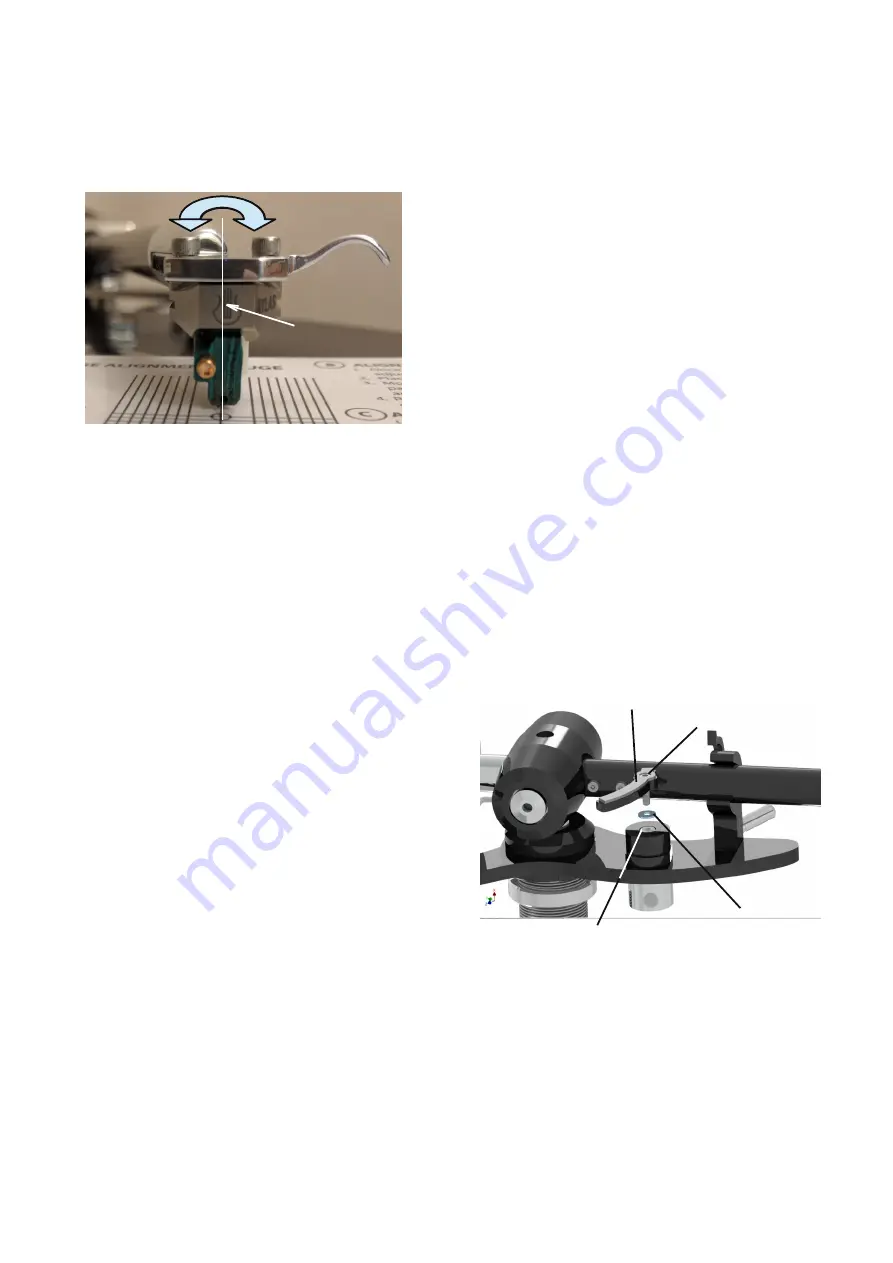
Azimuth
Azimuth is the vertical alignment of the cartridge / stylus
as shown below
This is correctly set at factory and is not adjustable.
Setting azimuth correctly is tricky at the best of times
and you need a certain amount of expertise to get it right.
If you do wish to change azimuth then the best way is to
insert aluminium cooking foil strips between one side of
the cartridge and the headshell.
Fine Tuning
You now have three adjustments approximated. Tracking
force, VTA, and azimuth. Fine tuning is best carried out
by listening. You should experimentally move from one
type of adjustment to the next, then to the next, in order
to balance the optimization for all three.
Some cartridges like Lyra and Dynavector are very
consistent. The manufacturers recommended tracking
force is always spot on so all you need adjust is VTA.
Others such as London Decca and Soundsmith benefit
from a little experimentation with force but never
wander outside the recommended range.
It’s helpful to listen to female vocals as you proceed.
Firstly try deviating from the cartridge’s recommended
tracking force by small increments - about 0.2 of a gram
deviation above and below the manufacturer’s basic
recommendations. Don’t worry about record damage
from heavy tracking as most record damage is actually
caused by mistracking from too little tracking force
rather than with too heavy.
If you’re getting mistracking at the low (lightest) end of
the range and yet the low range is generally sounding the
best (and on moderate signals, not heavy passages), then
chances are you have either a dirty stylus, a bad record,
an accumulation of crud in your cartridge, or a cartridge
that’s getting old. Changes in tracking force can change
the optimal VTA adjustment.
WARRANTY
We guarantee arms to be free from fault for 5 years
and will undertake remedial work, providing the
arm has not been modified by any party other than
ourselves and has not received maltreatment of any
kind.
FAULTS
In the event of a perceived fault, please refer to our
website > support > solving problems > Tonearms.
Notes
Rustling noise from sudden arm movement
Please note that the arm can make a slight
“rustling”
noise”
through the speakers when it is
lifted across the record. This should not be a cause
for concern as it is only caused by microphony of
the internal litz cable - under normal playing
conditions this is inaudible.
Lift / Lower device height adjustment
If the arm does not raise and lower to the correct
height then it can be adjusted by undoing the tiny
M2.5 Allen bolt in the top of the curved arm rest.
Lift the curved rest off the top of the piston and add
or remove small spacing washers to raise or lower
height according to need.
Diagram showing small spacing washers which set
height of curved rest
If the arm “sticks” (mis-tracks) playing a
record
Check that the curved arm rest is not fouling on the
yoke. Hold the arm finger lift and check that the
arm can traversed by hand above the surface of the
whole record. This will identify the position of the
“stick” – simply rotate the arm rest till it no longer
fouls – this can usually be carried out without
Page 8
VERTICAL
PLANE
AZIMUTH
ROTATION
TOP OF PISTON
SMALL SPACING WASHER(S)
CURVED ARM REST
M2.5 BOLT
























